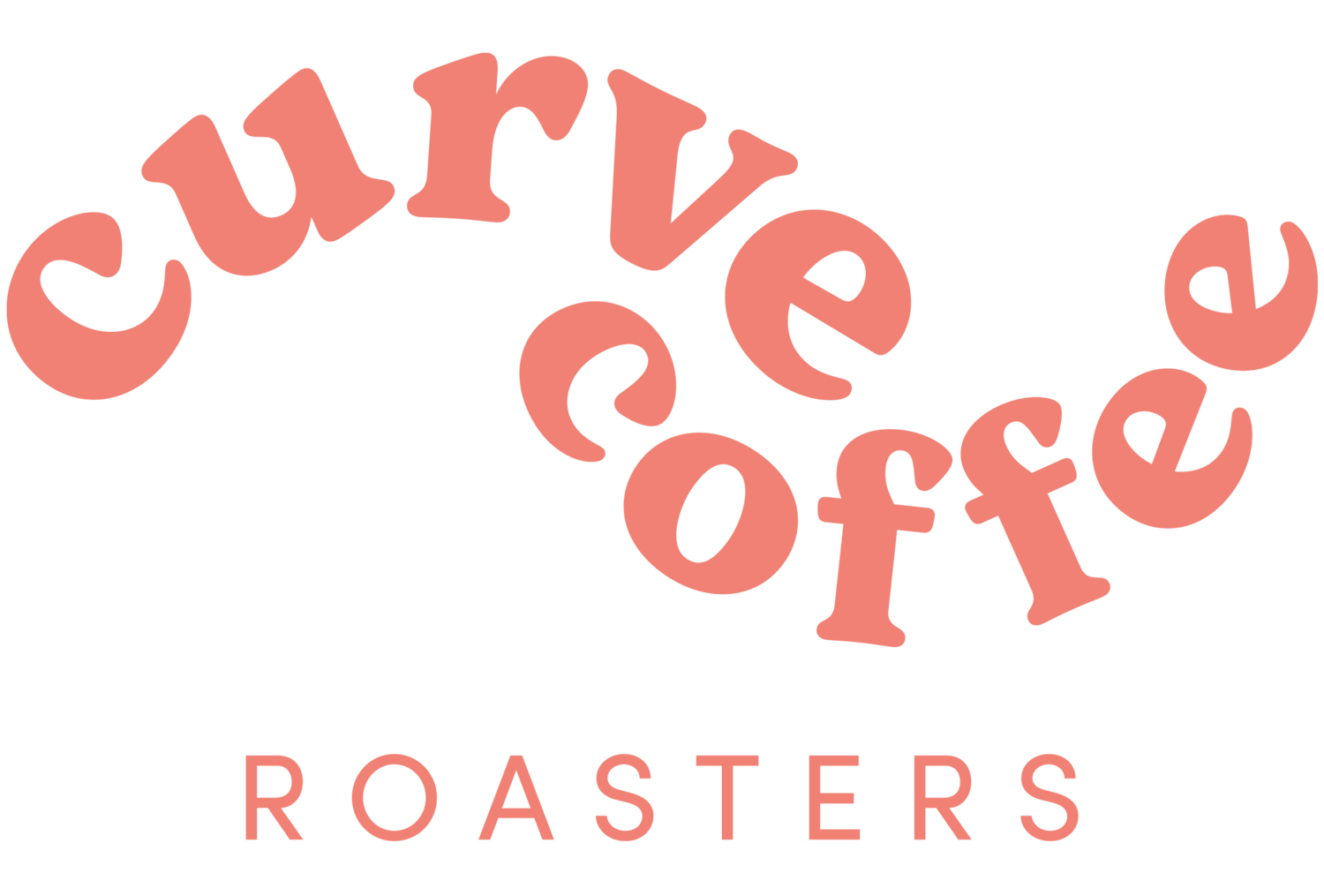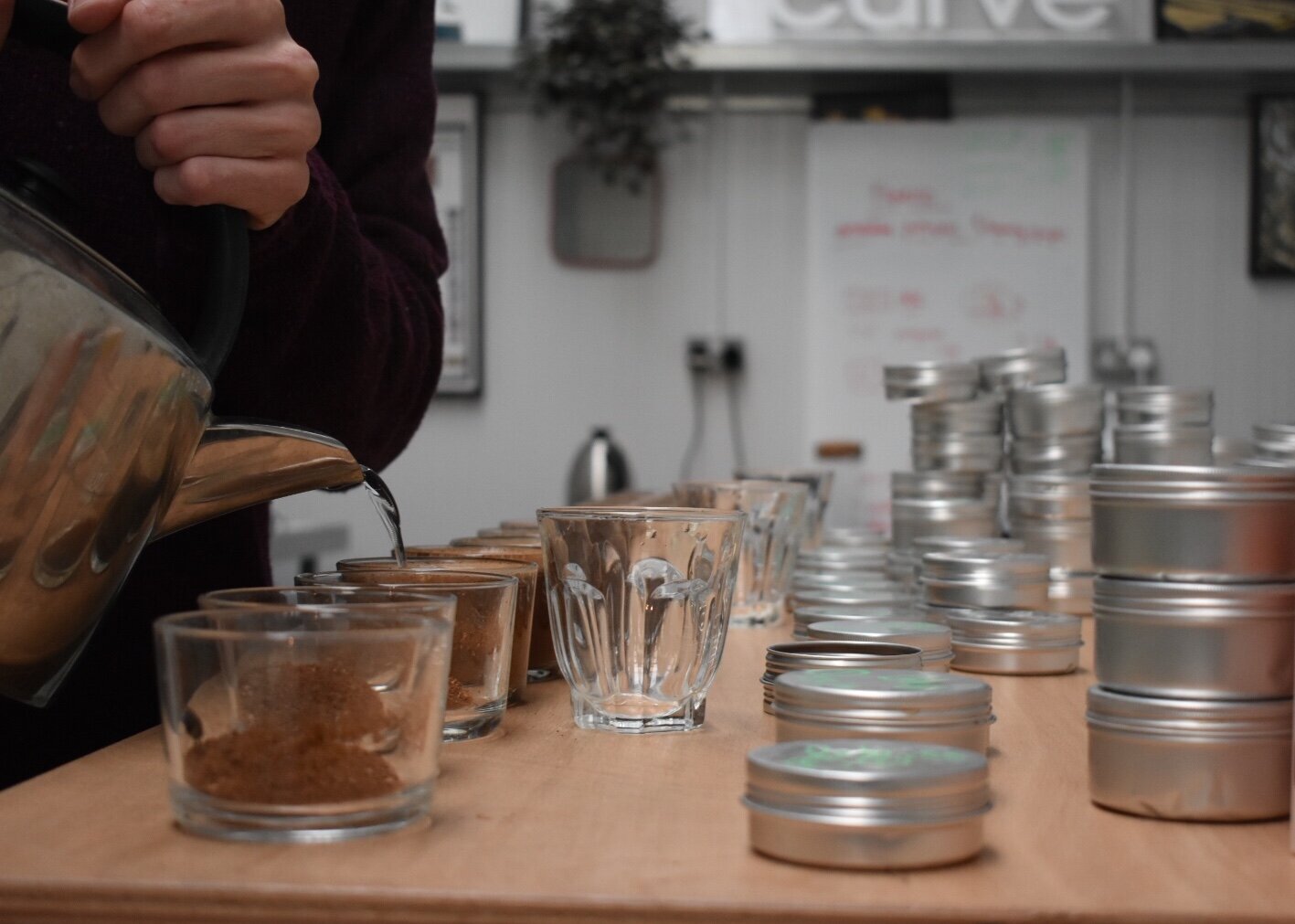Our approach to roasting
What the hell is a roasting curve?
And why are we so obsessed with them?
The process of roasting coffee can be translated into a graph where the temperature of the beans, as they are being heated inside of the roaster, is plotted against time and forms a curve. You have probably guessed by now that that’s where our name comes from!
Our roasters observe this curve closely and through adjustments in heat application throughout the roast they can modify its shape as well as develop different flavours in the cup. The possibilities there are almost endless.
At Curve we pay close attention to the technical aspects of roasting and diligently make records of our roasting curves so we can then taste test all the batches we roast and analyse their roast curves. The aim is then to link the sensory experiences in the cup with what we see on our graphs. This helps us to understand our craft, control the quality of the coffee we roast and constantly explore and improve what we do.
Thanks to our new Loring Falcon S15 roaster, we now have unprecedented control over the roasting process, with every little adjustment in the heat application during the roast taking immediate effect. Thanks to its closed roasting system technology we are able to do this with maximum precision and efficiency whilst minimising the amount of emission produced during the roasts.
Roasting styles & brewing suggestions
Light, medium, dark & everything in between
You know those “strength” numbers you see on packets of coffee in shops? Those don’t really refer to the strength of coffee (most coffee has a similar amount caffeine in and the strength of your drink will depend on how much ground coffee to water you use). They usually represent the roasting style and degree of development which is often related to the amount bitterness present in the cup. The higher the number the darker and more developed the roast, which usually means higher bitterness we’ve come to associate with “stronger” coffees.
At Curve we want to focus on developing lots of sweet aromatics and stay away from too much bitterness on our coffees. In general, our roasting style sits somewhere between light to medium for our filter coffee and medium for our espressos. However, we are very aware that those terms mean very different things to different people. We always aim to develop our roasts enough to bring out each coffee’s character and realise its potential without adding roasty notes.
We do have a slightly different approach to roasting coffees depending on the brewing method. Always striving to maximise sweetness, in balance with pleasant acidity.
Espresso vs Filter
Coffees roasted for filter:
Our filter roasts are generally roasted lighter, highlighting brightness, liveliness and fruit notes in coffees.
We recommend these if you like your coffee a little lighter and usually drink it black. Great for these brewing methods: V60, Drip filter, Clever Dripper, Cafetiere & Aeropress.
Coffees roasted for espresso:
With our espresso roasts are a little darker, developing a full body and coating mouthfeel. Not just by roasting for longer but usually adjusting the whole roast profile. The result is a richer, fuller cup with maximum sweetness and soft acidity.
We recommend these if you like a richer, bolder brew and/or add milk to your coffee. Great for these brewing methods: Espresso and Stovetop, Aeropress, Cafetiere.





